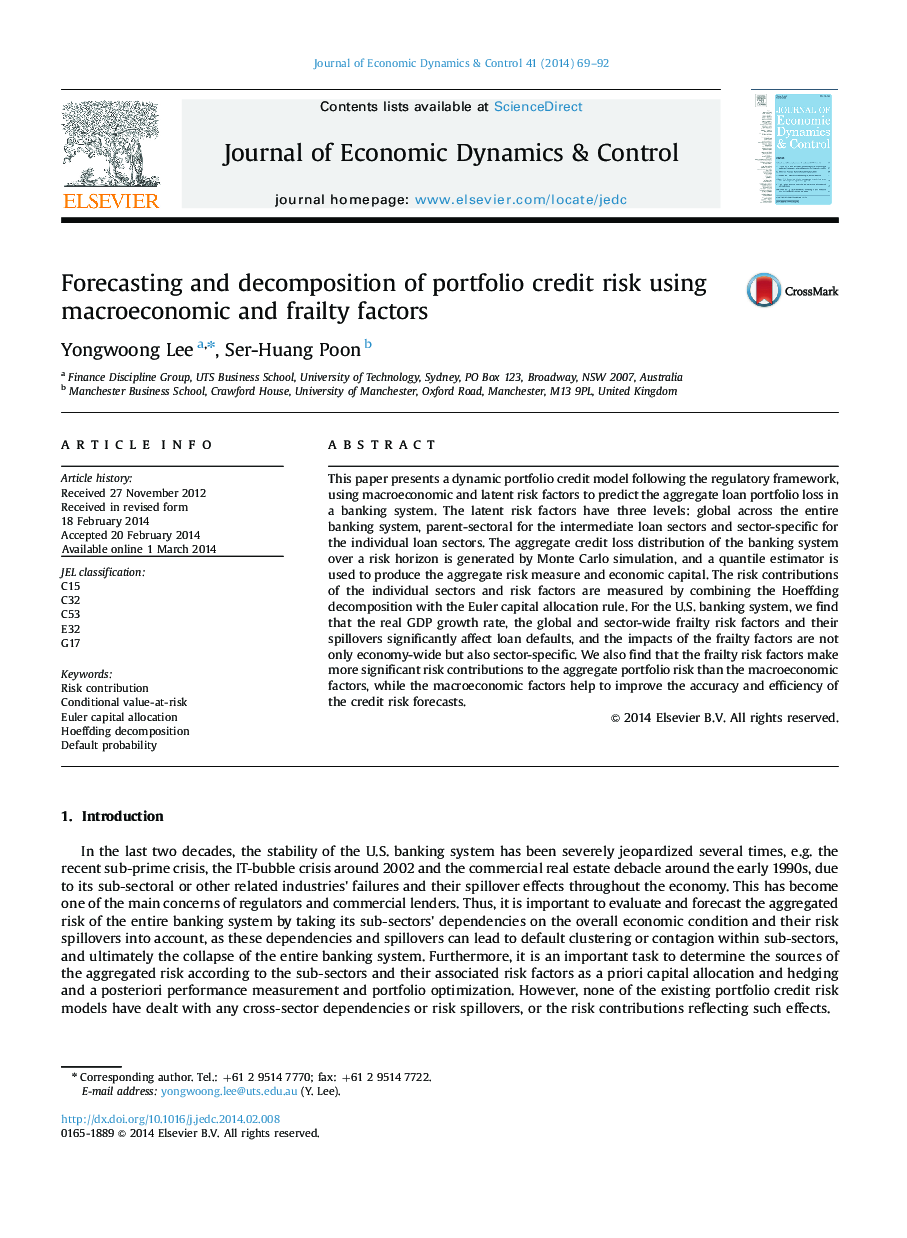| Article ID | Journal | Published Year | Pages | File Type |
|---|---|---|---|---|
| 5098482 | Journal of Economic Dynamics and Control | 2014 | 24 Pages |
Abstract
This paper presents a dynamic portfolio credit model following the regulatory framework, using macroeconomic and latent risk factors to predict the aggregate loan portfolio loss in a banking system. The latent risk factors have three levels: global across the entire banking system, parent-sectoral for the intermediate loan sectors and sector-specific for the individual loan sectors. The aggregate credit loss distribution of the banking system over a risk horizon is generated by Monte Carlo simulation, and a quantile estimator is used to produce the aggregate risk measure and economic capital. The risk contributions of the individual sectors and risk factors are measured by combining the Hoeffding decomposition with the Euler capital allocation rule. For the U.S. banking system, we find that the real GDP growth rate, the global and sector-wide frailty risk factors and their spillovers significantly affect loan defaults, and the impacts of the frailty factors are not only economy-wide but also sector-specific. We also find that the frailty risk factors make more significant risk contributions to the aggregate portfolio risk than the macroeconomic factors, while the macroeconomic factors help to improve the accuracy and efficiency of the credit risk forecasts.
Keywords
Related Topics
Physical Sciences and Engineering
Mathematics
Control and Optimization
Authors
Yongwoong Lee, Ser-Huang Poon,
